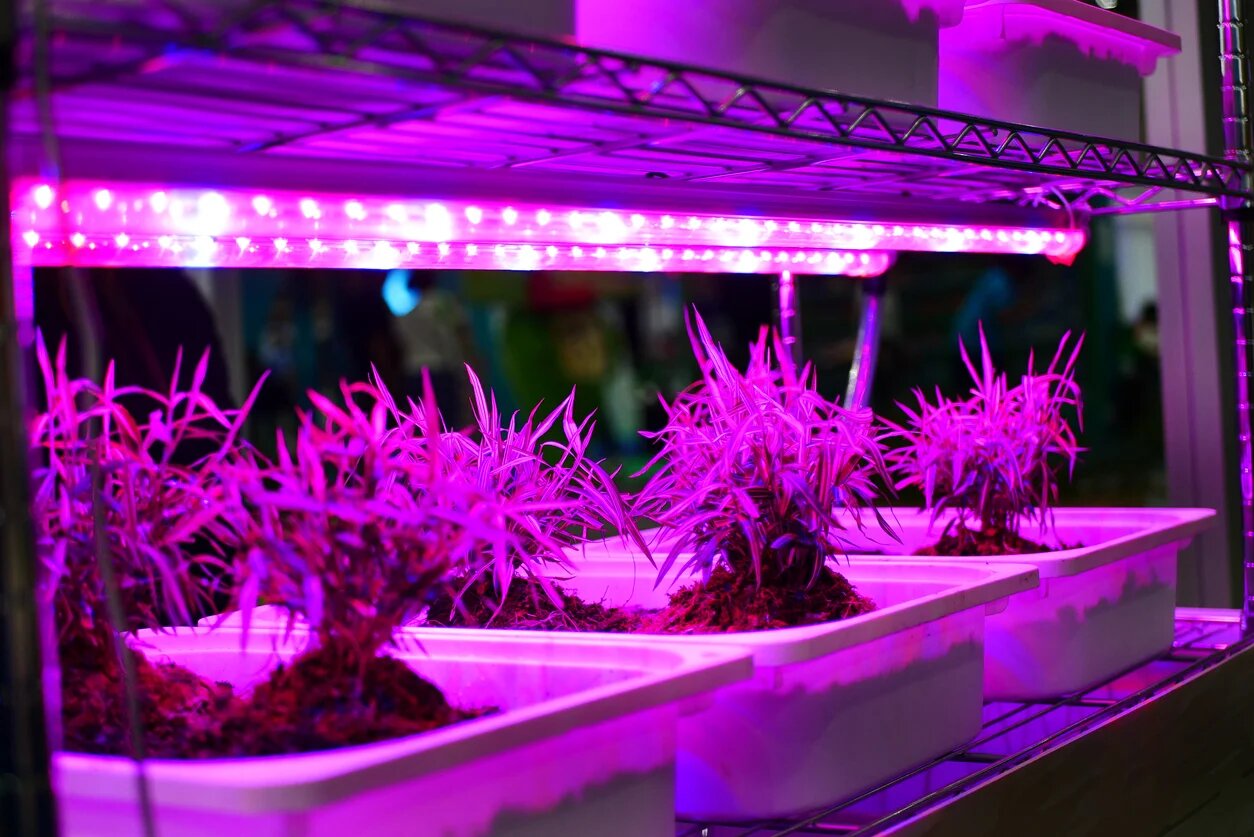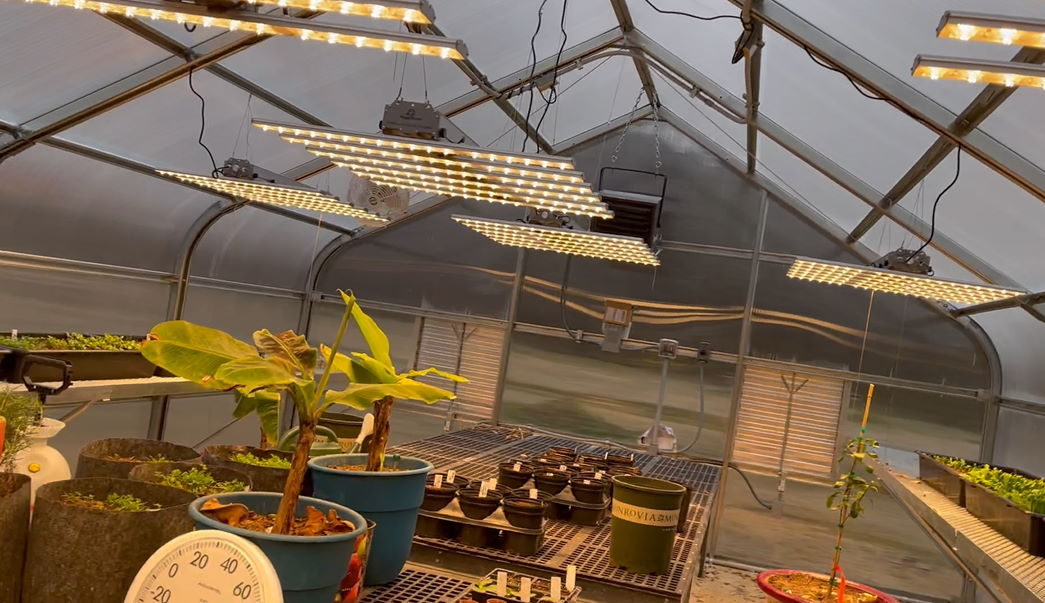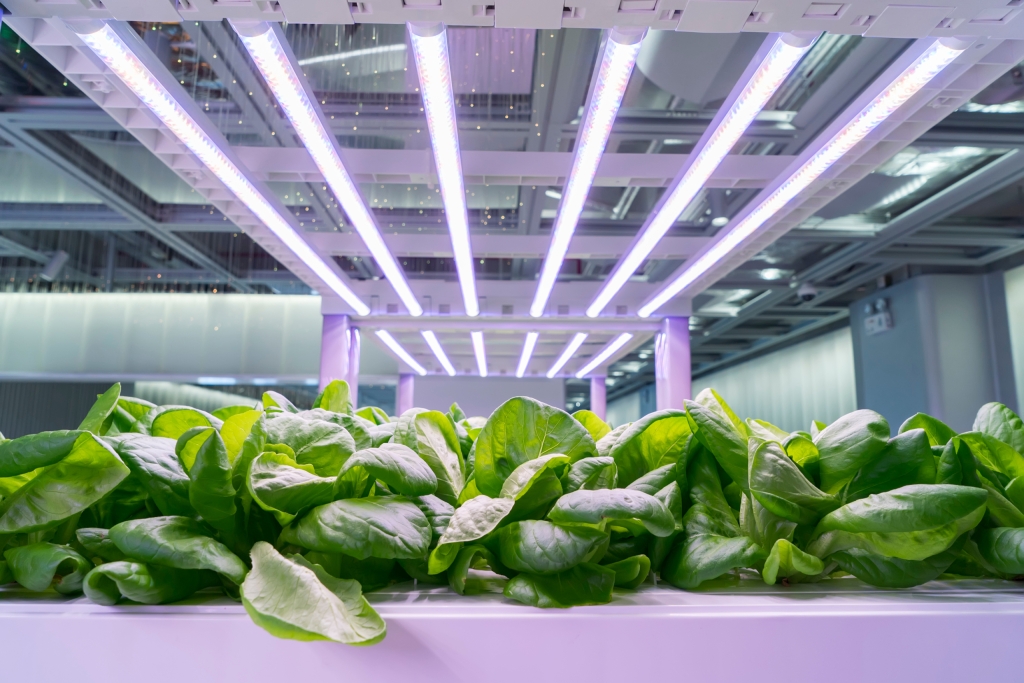Do LED Grow Lights Work?
What You Should Know About LED Grow Lights
If you're an indoor gardener, you might have heard of LED grow lights. Unlike traditional lighting solutions like fluorescent and incandescent bulbs, which have been used in the past for indoor plant growth, LED grow lights have been gaining in popularity for a few years now. But what are LED grow lights, and why are they a better option for indoor plant growth?
LED grow lights are lighting fixtures that use light-emitting diodes (LEDs) to produce the type of artificial light necessary for photosynthesis in plants. Unlike traditional lighting solutions, which emit light in a broad spectrum, LED grow lights can be custom-made to produce specific types of wavelengths that plants need to grow, including red and blue light. This also means that LED grow lights can imitate natural sunlight more accurately to produce better plant growth.
In addition to being able to produce specific types of light, LED grow lights also have a few distinct advantages over other types of grow lights, including HPS lamps. For one, LED grow lights are much more energy-efficient. They use up to 60% less energy than HPS lamps, making them the more affordable option in the long run, despite their higher upfront costs.
LED grow lights also produce less heat than traditional lighting solutions, which tend to run hot. This means that indoor gardeners can run their lights closer to their plants, giving the plants more direct access to the light they need to grow. LED grow lights also have a longer lifespan than traditional lighting solutions, lasting up to 60,000 hours of use.
How do LEDs Function and What is Their Working Principle?
As indoor gardening continues to gain popularity, the use of grow lights has become a common practice for cultivating plants. Among the different types of grow lights available, LED (light-emitting diode) lights have gained immense popularity due to their energy efficiency, versatility in light spectrums, and longer lifespan.
Can LED Grow Lights Effectively aid Plant Growth?
Many people wonder if grow lights actually work for indoor plant growth or if it is just a myth. The truth is, grow lights are highly effective in promoting plant growth and yield. With advancements in technology, grow lights are tailored to provide the right amount of light spectrum, intensity, and wavelength that plants need for optimal photosynthesis.
Grow lights convert electrical energy to light particles that plants use for photosynthesis. The type and amount of light that plants require for growth depend on the plant type, growth stage, and environmental factors. Photosynthesis occurs when chlorophyll in plants absorbs light energy and converts it into organic compounds to fuel their growth. The optimal light spectrum for photosynthesis includes blue and red wavelengths, but green and yellow wavelengths are also important.
There are different kinds of lights available in the market, including LED, fluorescent, and high-intensity discharge (HID) lights. LED lights are energy-efficient and long-lasting, making them a popular choice for indoor gardeners. Fluorescent lights provide a good spectrum of light and emit less heat, making them suitable for small indoor gardens. HID lights are high-powered and generate intense light output, making them ideal for large indoor gardening applications.
How do LED Grow Lights Impact Plants?
LED grow lights have become increasingly popular among indoor gardeners due to their energy efficiency, lower upfront costs, and ability to mimic natural light. But what is the effect of LED grow lights on plants?
LED grow lights have a significant impact on plant growth, influencing various stages of the growth process through different light colors. The blue wavelengths of LED lights promote vegetative growth, making them ideal for seedlings and plants in their early stages of development.
On the other hand, the red wavelengths of LED lights promote flowering and fruiting, making them perfect for plants in their later stages of growth. In addition, full spectrum LED lighting provides all the wavelengths of light required for the different stages of plant growth ensuring healthy and robust plants.
There are different types of LED lights available in the market, including high-intensity discharge (HID), fluorescent bulbs, and LED panels. Full-spectrum LED panels have become the most popular option among indoor gardeners due to their low energy consumption, longevity, low heat output, and ability to provide the full spectrum of light required for plant growth.
Check out this article: How To Automate Grow Lights With Controllers, Movers, and Meters?
What are the Different Kinds of Grow Lights Available?
Whether you're an amateur or a seasoned indoor gardener, finding the right plant lights is essential for your plants' health. While there are various types of quality lights on the market, each comes with its own set of benefits and drawbacks.
High-pressure Sodium Lights
High-pressure sodium lights are a popular choice for indoor gardeners looking to promote growth and flowering in their plants. These lights are known for producing intense and bright light in the orange and red spectrum, which is particularly beneficial for fruit and flower growth.
One of the key benefits of high-pressure sodium lights is their ability to help plants produce larger and more bountiful yields. They provide the specific types of light that plants need during the fruiting and flowering stages of growth, allowing gardeners to optimize their crops for maximum yields.
However, it's important to note that using high-pressure sodium lights can also present some challenges. Because these lights produce intense heat, it's important to have good ventilation and temperature management in place in order to avoid overheating your grow space.
Fluorescent Lights
Fluorescent lights have long been used in indoor gardening due to their low cost and energy efficiency. These lights work by passing an electric current through a gas, which then produces ultraviolet light. This ultraviolet light is then converted into visible light by a phosphorescent coating on the inside of the bulb.
While fluorescent lights may not have the same intensity as other types of grow lights, they can still be effective as secondary lighting for plants that require lower light levels or for starting seedlings. In fact, fluorescent lights work particularly well for starting seedlings since they emit less heat than other types of lights, reducing the risk of damaging young plants.
However, there are some drawbacks to using fluorescent lights as primary light sources. They have a limited spectrum of light, particularly deficient in red wavelengths that are necessary for flowering and fruiting plants.
Metal Halide Lights
Metal halide lights are a popular choice for indoor gardeners and botanical enthusiasts who want to give their plants the right kind of light for optimal growth. These lights generate a high-intensity white light that can reach up to 100 lumens per watt. The lumen output depends on the wattage and the brand of the metal halide light. They emit a similar spectrum of light to sunlight, which helps to promote healthy plant growth.
However, one significant downside of using metal halide lights is its high heat output. They can get very hot, causing burns to both plants and people. Therefore, best practices for using them require ensuring safe placement, keeping metal halide lights away from any flammable items, and using a heat buffer between the light and its immediate environment.
Metal halide lights typically last for around 20,000 hours, giving enough time to grow plants throughout their entire life cycle. These high-intensity discharge lamps are often used during the vegetative stage of plant growth due to the blue wavelengths they produce. Blue wavelengths stimulate plant growth and increase vegetative growth, ideal for foliage plants and herbs.
Greenhouse LED Grow Lights
Greenhouse LED grow lights have become more popular among indoor gardeners who seek environmentally friendly and energy-efficient lighting options. These lights offer numerous benefits but also have a few drawbacks worth considering.
Firstly, one important benefit to highlight is that greenhouse LED lights are mercury-free, making them a safer and more environmentally friendly lighting option than traditional lighting. Additionally, these lights have a longer lifespan, making them more cost-effective in the long run as they require less frequent replacements.
However, it is worth noting that LED grow lights can be more expensive than other lighting options initially. Also, they may require more frequent adjustments to the positioning and intensity to achieve maximum plant growth.
When it comes to the types of plants that benefit most from LED grow light usage, leafy greens, herbs, and vegetables are the perfect candidates. These types of plants need plenty of light to thrive, and the right intensity of greenhouse LED grow lights can help produce robust and healthy growth.
How do Plants React to Different Light Colors?
Plants require different types of light colors to carry out their photosynthetic processes. Each color has a unique effect on plant development and growth. Understanding how plants react to different light colors is crucial in optimizing indoor plant growth.
The light spectrum, light intensity, photoperiod, and light uniformity are all essential factors in plant growth. The spectrum of light is important because different wavelengths have distinct effects on plant growth and development.
Light intensity affects the rate of photosynthesis and influences plant growth. Photoperiod is the duration of light exposure plants receive per day, and it is critical for flowering and fruiting. Light uniformity, or the even distribution of light, ensures all parts of the plant receive adequate light for optimal growth.
Plants respond differently to each light color. Blue light promotes vegetative growth, stem elongation, and leaf production. Green light, on the other hand, plays a minor role in plant growth, but it aids in regulating plant functions. Red light stimulates flowering and is crucial in the development of fruit and flowers. Far-red light, which is at the end of the spectrum, plays a specific role in regulating the photoperiod and can prevent premature flowering.
Explore the Revolutionary Benefits of LED Grow Lights
LED grow lights have emerged as a revolutionary advancement in the field of indoor gardening. They have eclipsed traditional HPS systems and earned a reputation as the superior lighting source for indoor plants. One of the primary advantages of LED grow lights entails their cost efficiency, energy efficiency, and their eco-friendly nature.
Unlike traditional lighting options, LED grow lights have a reduced energy consumption rate, which translates to lower energy bills while minimizing carbon emissions. In addition to this, they generate less heat and require less power, making them a suitable eco-friendly option for indoor gardeners.
Another advantage of LED grow lights is their smaller, compact size, making them easy to use in confined spaces. Unlike HPS systems, LED grow lights take up less space, making them suitable for growers who have limited space availability. The smaller size also makes using LED grow lights more convenient, as growers can easily move them around without facing any logistical challenges.
The benefits of using LED grow lights extend beyond their cost efficiency, eco-friendliness, and ease of use. LED grow lights have a long lifespan, which makes them a suitable investment for indoor gardeners. Their longevity means that growers will not need to replace them frequently, thereby saving money in the long run.
Are LED Lights The Best For Indoor Growing?
If you're an indoor gardener, you may have heard that LED lights are the best option for growing your plants. While it's true that LED lights have many advantages, they may not be the ultimate solution for everyone. It all depends on your specific needs.
One of the major advantages of LED lights is that they are energy-efficient. They use less electricity than other types of indoor grow lights, which can save you money over time. LED lights also emit less heat than HID lights, which means you don't have to worry about overheating your plants.
Another advantage of LED lights is that they are durable and have a long lifespan. They can last for up to 50,000 hours, which is much longer than HID lights. LED lights are also available in a variety of colors, which can be customized for specific plant needs.
Read More: Best LED Grow Lights
Are Grow Lights a Good Investment?
Indoor gardening has become increasingly popular in recent years, but it can be challenging to ensure that plants receive enough photosynthetic light to thrive. In areas where natural sunlight is limited, providing the right amount of light is crucial for the growth and productivity of indoor plants. One solution to this problem is investing in grow lights.
Grow lights come in various types, such as fluorescent, high-intensity discharge, and light-emitting diodes (LEDs). Each option offers different benefits, and their cost and energy efficiency vary. While the upfront costs of purchasing grow lights may seem daunting, they are worth considering for their potential benefits.
Investing in grow lights can increase productivity and yield. With a consistent and accurate supply of photosynthetic light, plants can grow more efficiently, leading to higher productivity and better yields. Additionally, plants grow faster under grow lights, which can increase the number of cycles of plant growth that can be completed within a year.











